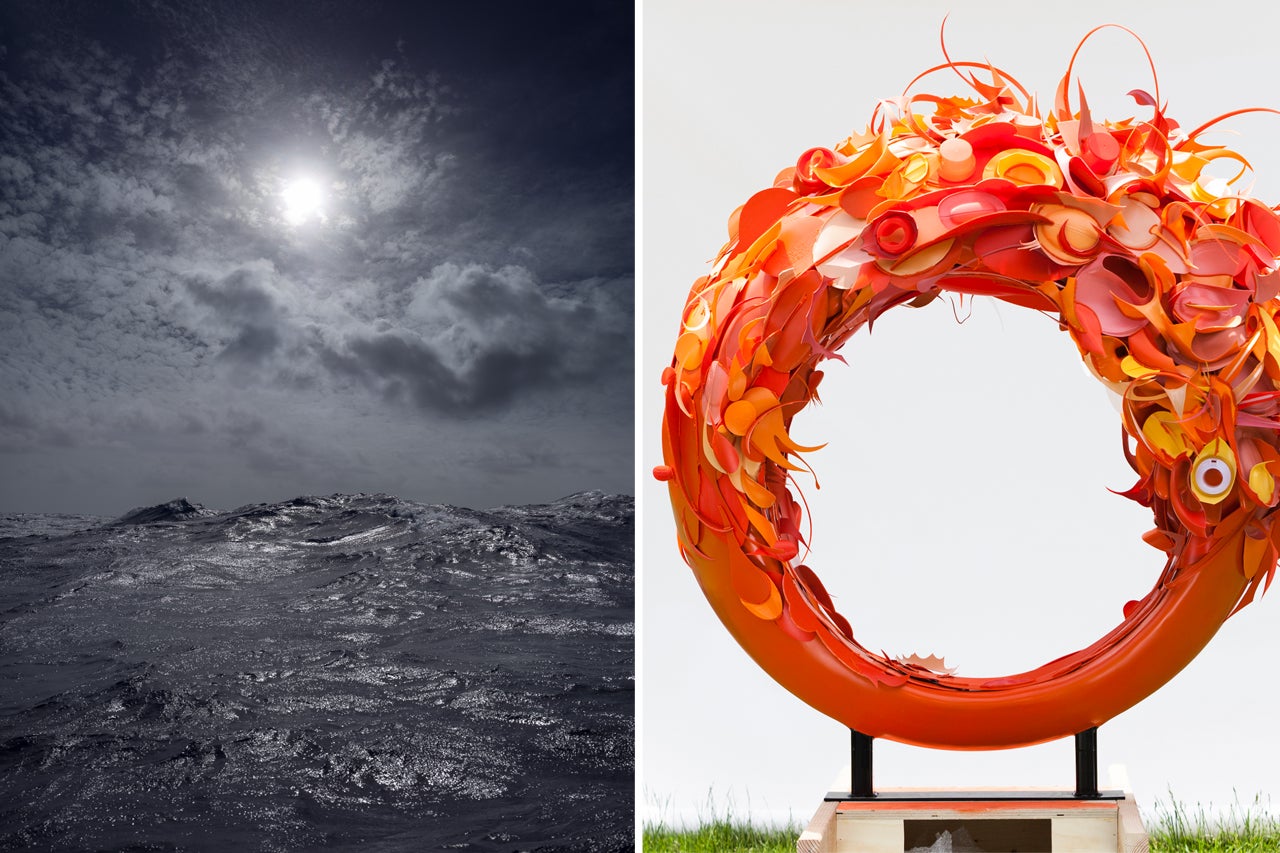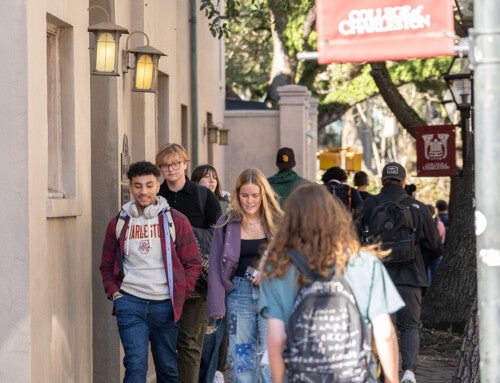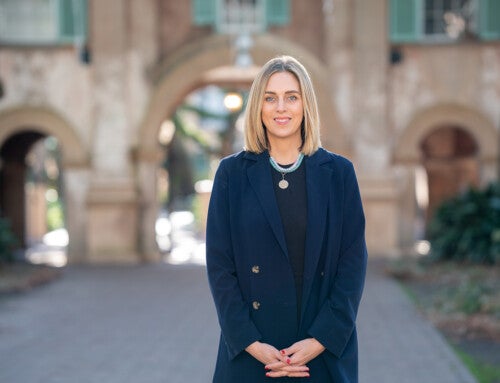An upcoming exhibit at the College of Charleston’s Halsey Institute for Contemporary Art titled “Sea Change” is intended to convey the message that our society’s culture of convenience comes at a steep price and produces consequences we can’t afford to ignore.
According to Mark Sloan, director and chief curator at the Halsey, this exhibit about plastic pollution is meant to engage viewers on a visceral, emotional and intellectual level.
“Plastic is entering our oceans at an alarming rate, ultimately making its way into the food chain and consequently threatening not only the lives of marine creatures, but also humans,” Sloan explains. “It’s estimated that 14 billion pounds of trash end up in our oceans each year. And scientists who study this issue project that by 2050, our oceans will contain more plastic than fish.”
“Sea Change,” which is co-sponsored by the South Carolina Aquarium, is actually two exhibitions in one. New York-based sculptress Aurora Robson has produced “The Tide is High,” and Pacific Northwest photographer-filmmaker Chris Jordan is presenting a selection of his images under that heading “Midway.”
Robson specializes in upcycling discarded plastic to create intricate, colorful pieces. She transforms everyday waste into beautiful objects through meticulous manipulation. Look closely and you’ll see bottle caps and plastic grommets, but step back and you’ll see forms that resemble otherworldly organisms which might exist on the remote ocean floor. Her work forces viewers to consider their own relationship with plastic materials and waste.
And Jordan’s evocative photographs depict the extreme magnitude of consumerism and its impact on our shared environment. “Midway” features images of sublime, compelling seascapes juxtaposed with haunting scenes of nesting baby albatrosses that have been fed lethal quantities of plastic by their parents who for eons have foraged over the vast Pacific Ocean for food, now finding mostly plastic. Jordan’s work reinforces the idea that society’s waste problems can affect ecosystems far removed from where most of us live. Jordan was one of several featured artists in Blue Sphere, which the Halsey co-hosted in 2009.
Sea Change opens Friday, Oct. 20, 2017, and runs through Dec. 9, 2017. Both Jordan and Robson will visit the College for several days during this time to offer additional opportunities for engagement on the issue of plastic pollution (see event schedule below).
Robson, for example, will be working with CofC students in one of sculpture professor Jarod Charzewski’s classes. The students recently gathered discarded waste from a marsh near Sullivan’s Island and will repurpose that refuse into art objects. Jordan will debut his documentary film about the albatrosses on Midway Island – “Albatross: A Love Story for Our Time from the Heart of the Pacific” – on Oct. 25 at 7 p.m. in Charleston Music Hall, 37 John St.
“We’re indebted to both these artists whose work is exceptionally powerful and compelling,” Sloan says. “With Sea Change, we hope to engage Charleston and the Lowcountry in actively recognizing and ultimately mitigating our enormous plastic waste problem.”
RELATED: Learn more about the “Sea Change” exhibitions and artists.
“Sea Change” – Event Schedule
All events are free and open to the public.
Opening Reception – Friday, Oct. 20, 6:30-8 p.m. – Halsey Institute
Artist Talk – Aurora Robson – Sat., Oct. 21 2:00 p.m. Halsey Institute
The Tide is High: When Art and Action Collide (Robson speaks about her work) – Monday, Oct. 23, 6:30 p.m. – South Carolina Aquarium (students should at the SC Aquarium website)
Encountering the Albatross – An Evening with Chris Jordan – Tuesday, Oct. 24, 7 p.m. – Sottile Theatre
Film Premiere of “Albatross: A Love Story for Our Time from the Heart of the Pacific” – Wednesday, Oct. 25, 7 p.m. – Charleston Music Hall






